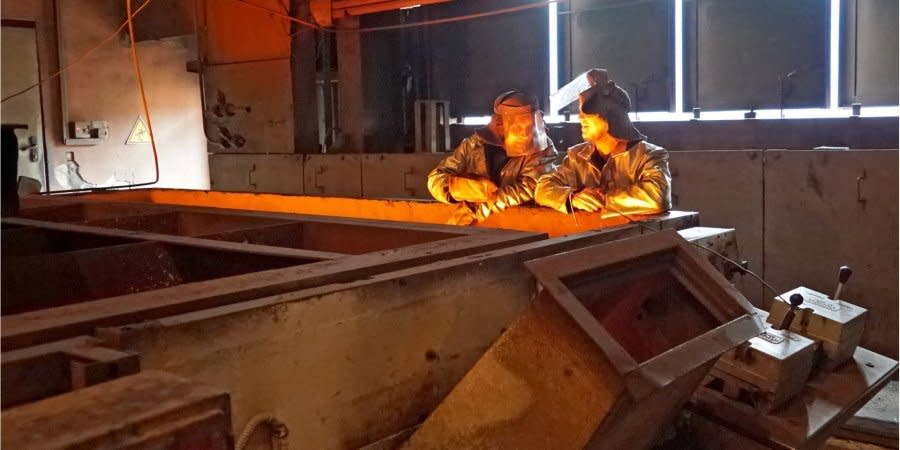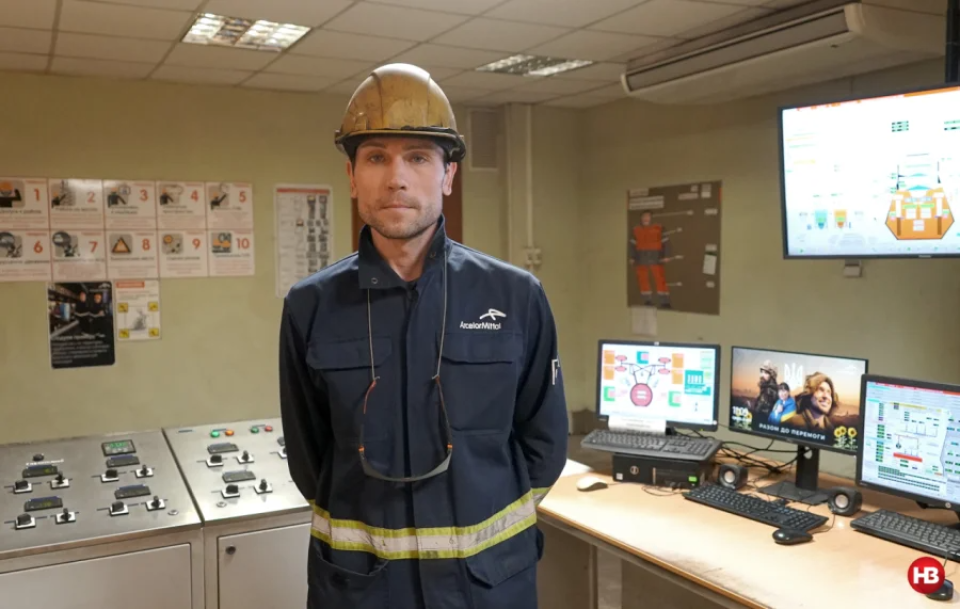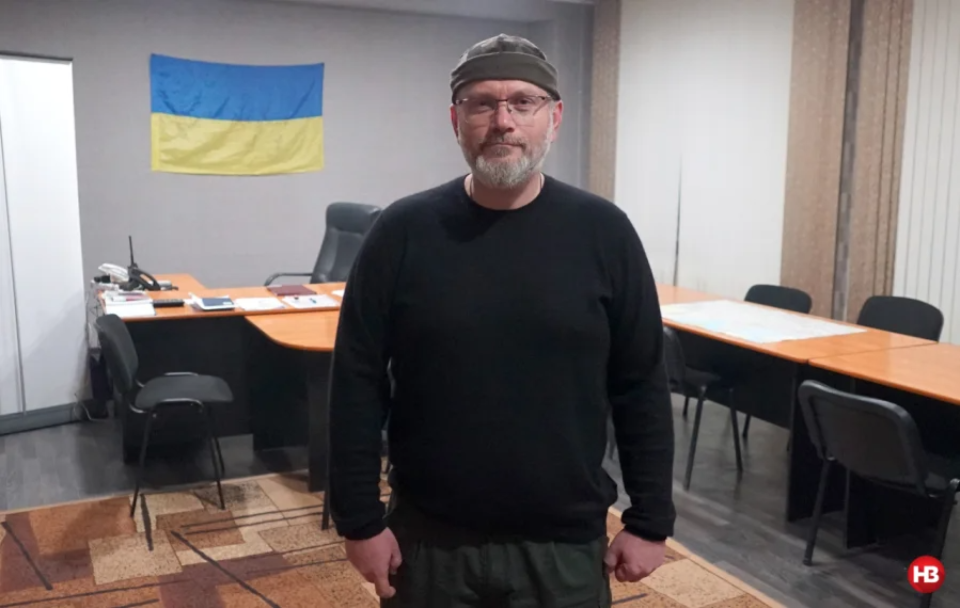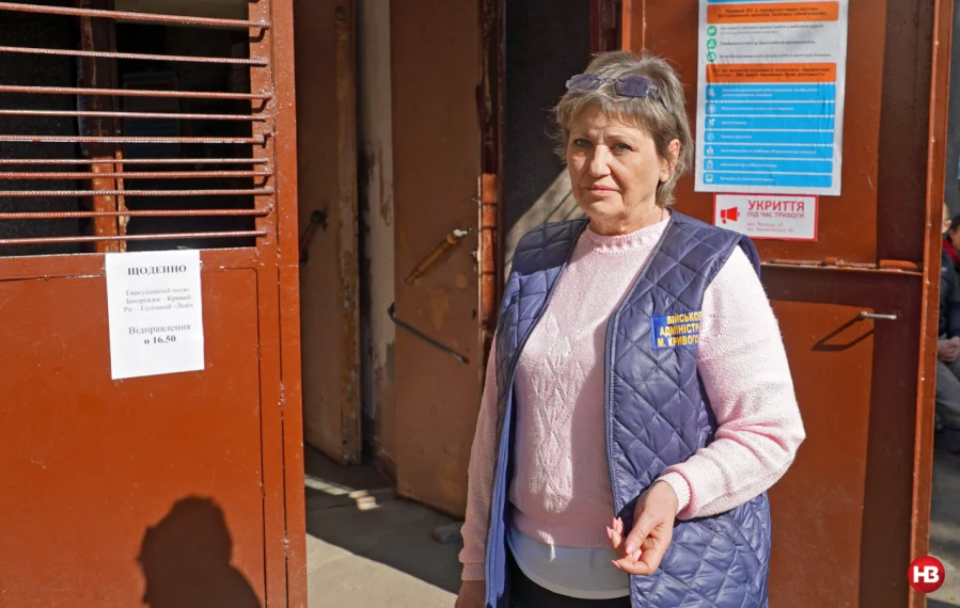Wartime Kryvyi Rih: Zelensky's hometown gets back to work, welcomes refugees, and rediscovers its Ukrainian identity

- Oops!Something went wrong.Please try again later.
At the beginning of May, when everything is starting to turn green, NV journalists visited Kryvyi Rih, where Volodymyr Zelensky was born. It is a city of 600,000, with predominantly red tones, as there is too much iron ore in the soil and in the air.
This city, like the country's president to some extent, is undergoing a transformation from an industrial Russian-speaking enclave amid endless steppes into an outpost of Ukrainian identity in the face of the Russian threat.
NV visited some landmarks of Kryvyi Rih to investigate its transformation during the war.

Metallurgical plant
"When you see Azovstal destroyed, you get scared," Artem Filipiev told Western journalists who came to the city. For him, the steelworks in Mariupol, surrounded by Russians, is not only a story about the resilience of Ukrainian defenders, but also a professional injury.
After all, Filipiev works as the deputy director for administrative affairs at a steel mill just as large as Azovstal — Kryvyi Rih's ArcelorMittal.
"Metallurgy is to some extent the steel backbone of our country," he says, adding that after the war, all if of Ukraine’s domestic enterprises in the industry will definitely get back to work.
"And they will work for Ukraine," asserts Filipiev.
Read also: Russia is laying ground to advance on Mykolaiv and Kryvyi Rih, says General Staff
At the moment, though, things have been difficult for the local steel industry.
ArcerolMittal’s operations ground to a halt with the start of the war. In February, mining operations ceased. This was a safeguard in the event of a power outage, otherwise, the company would not be able to evacuate the miners. In March, the plant shut down all four of its blast furnaces.
But gradually, the metallurgical giant, which employed 29,000 people in peacetime, is coming back to life. On April 9, one of the blast furnaces resumed operation.
Yevhen Ivanov, who does shifts as a foreman, moved from the stove to a quiet room to talk to the media, explaining that the Ukrainian defenders who have kept the enemy back and prevented any attack on the city should be thanked for resuming production.
"We produce cast iron and support the economy of the country and the city. We are not working at full capacity, but as best we can,” he explains.
It is risky to put all the facilities back into production in wartime conditions, though, because a shelling attack can cause a serious catastrophe.
ArcelorMittal’s steelworkers aren’t only pulling shifts at the factory – more than 1,800 of the enterprise’s workers have been mobilized by the Armed Forces, and ArcelorMittal Kryvyi Rih has already lost five of them.
Read also: Russia unleashes multiple rocket launcher fire on settlements near Kryvyi Rih
By the end of March, the plant reached 40-50% of its pre-war production figures. But sales remain a problem: Filipiev says 85% of the plant's output is exported.
“The lack of port operations is the biggest problem right now.”
ArcelorMittal’s traditional markets are the Middle East and North and West Africa: it’s impossible to deliver products without sea-based shipping, which is all currently blockaded by the Russian Black Sea Fleet.
According to the deputy CEO of the company, the government is doing a lot to reorient the logistics chains from Ukrainian ports to the railway, with access to the Baltic Sea. But that doesn't solve the problem.

A Ukrainian city
More than 600,000 people live in President Zelensky's hometown, and so far it’s remained a safe haven for Ukrainians fleeing combat in east and south – its residential areas have not been affected by Russian missiles and airstrikes.
But sirens sound long and loud over the city. And it is the war that lingers on the minds and tongues of everyone you come across in the streets here. There are a lot of people here now – both locals and visitors: volunteers, evacuees, and the military.
At the entrance to Shelter+, a non-profit public and cultural initiative that dates back to 2002 and now helps evacuees and the Armed Forces, NV met Officer Oleh Shulha. He came here, almost to the outskirts of the city, to pick up a variety of devices that volunteers had purchased for the army.
Shulha is, in fact, an actor – he starred in the movie Call Sign “Banderas”. But now he works with the military, on the border of the Dnipropetrovsk and Kherson oblasts.
Read also: Putin the loser
Eight years ago, he fought in eastern Ukraine, so now whether to go to the front or not was barely a question.
"The choice was much more difficult in 2014," says the former actor.
Now he is only caught off guard by one question: "Why are the Russians trying to hold on to our land? They are doomed either way. What are they doing here? Why are they dying here? It's a mystery to me," Shulha admits.
But for Yuliy Morozov, co-founder of Shelter+, it is no longer surprising that the atmosphere in Kryvyi Rih has changed significantly over the past two months. This largely Russian-speaking industrial city, which used to vote for the pro-Russian, Viktor Yanukovych-led Party of Regions, was not very culturally developed, because the regional center – the city of Dnipro – usually hogged all the attention. Kryvyi Rih remained overlooked by domestic artists and international projects.
"We have been working for a long time to make Kryvyi Rih a more Ukrainian city,” Morozov explains.
“Sometimes we despaired that our work was not effective enough.”
Now there are few openly pro-Russian people left in the city, he adds, and even they have been confined to the sidelines. And they will probably never exhibit their essence, Morozov insists. But those who want to fight and take revenge on Russia, on the other hand, have grown in numbers.
"It is clear that Kryvyi Rih has yet to find its identity,” says Morozov.
"But it is definitely not pro-Russian and it will definitely never be like that again.”

Patriotic Vilkul
Morozov is an old and outspoken opponent of Oleksandr Vilkul, the current head of the Kryvyi Rih military administration and the son of longtime ex-mayor Yuriy Vilkul.
The Shelter+ co-founder calls the youngest of the Vilkuls a "Soviet man”, who was once a staunch supporter of Yanukovych’s party. However, now political struggles in the city have receded into the background.
"The fact that Vilkul Jr. did not become an outspoken collaborator is not a bad thing,” says Morozov.
“He genuinely changed his views.”
Read also: Russia launches missiles at Dnipro, Kryvyi Rih
Vilkul, who was once deputy prime minister in Mykola Azarov's government under fugitive ex-president Viktor Yanukovych, has changed not only his views but also his appearance. Instead of his usual business suit, he wore a sports sweater and a hipster hat during a meeting with NV.
The "new" Vilkul recalled how at 5 am on February 24 he phoned the airport and ordered the runway blocked off with the airport’s vehicles. And he brought BelAZ trucks to the entrances to the city to block the roads with their help if necessary.
Now the city feels safer than in the beginning, explains Vilkul.
"Thanks to the courage and heroism of our soldiers, the enemy was pushed back about 50 km from the city," he said.
NV asked Vilkul about his recent meeting with Tetyana Chornovol, an activist and ex-MP, who has long been an ardent opponent of the Party of Regions, and by extension Vilkul himself.
The latter was not upset by this mention. On the contrary, he expressed his admiration that now Chornovol, who has joined the ranks of the Ukrainian defenders, is effectively fighting enemy armored vehicles. And she already has several feats under her belt on the Kryvyi Rih axis.
"She asks me: ‘how do you feel about [Stepan] Bandera supporters now?’ And I respond: the only thing we can disagree with the "Banderites" on now is how to fight the Russians,” says Vilkul.
"There can be no other differences."

Forced migrants
During the two and a half months of war, Kryvyi Rih, like many other large Ukrainian cities, has received thousands of internally displaced persons.
People who have just fled the war and arrived in the city can be found near volunteer organizations such as Shelter+ or at the People's House on Kryvorizhstal Street, which provides legal advice and other services to IDPs.
Natalia Patrusheva, who volunteers at the People's House every day, sees a variety of different people here – the wounded, people who have suffered strokes and have not yet received medical care, and those who fled from the Russians on foot, as well as women with children.
During the war, 50,000 migrants passed through this hub. And if at first came residents of Kyiv Oblast, then Kharkiv, Mariupol and Zaporizhzhya, now the main influx is from Kherson Oblast to the south.
"Almost everyone has post-traumatic stress disorder,” says Patrusheva.
Read also: Russian missile strike on railway in Dnipro Oblast kills one man, levels buildings
“Children hide behind their mothers, sometimes it is impossible to invite them to the children's room.”
The volunteer center also often receives calls from people looking for missing relatives. A significant number come from abroad. But the only thing they can say in the People's House is whether a certain person is registered with them.
"We write down the name, surname, year of birth. Let's see [in response to a request] if we had such a person. One person was found that way, but most have not been,” Patrusheva explains.
Nurse Tamara Dediura works at the evacuee center every day. She sees lots of people who need help – those with high blood pressure and those who need sedatives, because there emotions and post-traumatic stress responses often run high.
"People are in shock, panicking, they begin to talk about what they went through – and again break into tears," says Dediura. That is why the center also has a number of on-staff psychologists.
At the entrance to the People's House, NV meets a man, a combine harvester operator, who fled with his family from the occupied village of Kozatske in Kherson Oblast. He refused to be photographed or give his last name, but he spoke about the situation in his home village:
Read also: Soviet identity is gone forever, but Putin doesn’t get it
Russians there are victimizing the civilian population, and there are reports of rape. And those who work the land are forced to sign paper contracts: 70% of the harvest will go to the occupiers, and 30% can be kept.
The farmer has not yet decided what to do next – to stay in Kryvyi Rih, near Kherson Oblast, or go somewhere further.
According to the Kryvyi Rih municipal authorities, the city has seen 100,000 evacuees pass through the city in transit, while another 50,000 have settled there, for now.

